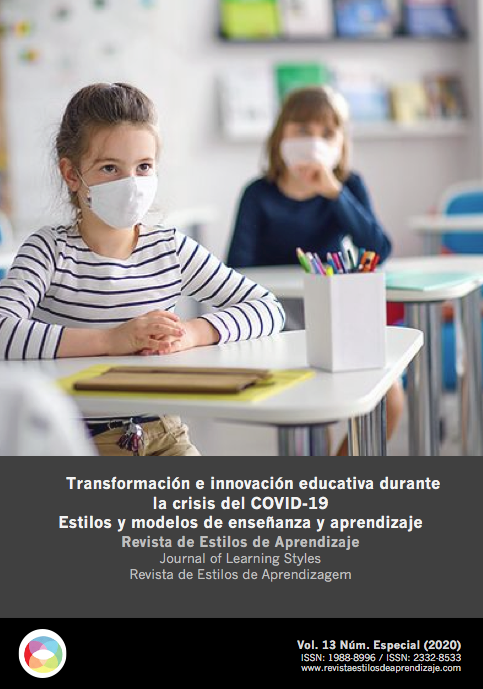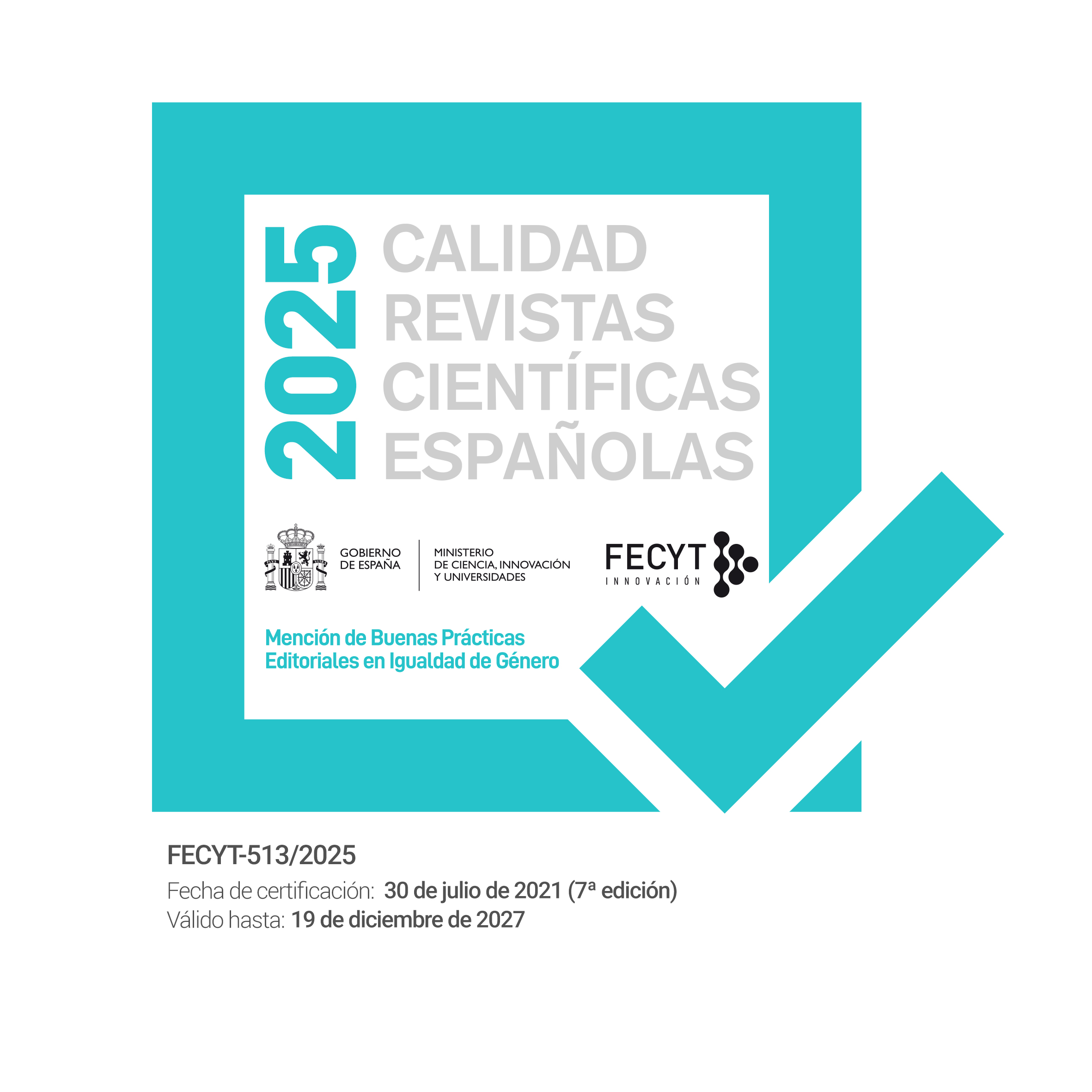Postgraduate virtual education in the times of COVID-19
DOI:
https://doi.org/10.55777/rea.v13iEspecial.2241Keywords:
Postgrado, Virtual education, COVID-19, Social isolationAbstract
Almost all countries in the world have implemented policies of social isolation, as a way to prevent the spread of COVID-19. This measure restricted face-to-face classes, promoting distance education at all educational levels. The Graduate Unit of Education Sciences, Hermilio Valdizan National University, Peru, took advantage of its resources to implement distance education two weeks after the isolation began. The present study aims to interpret the experiences lived by students and teachers in the implementation of virtual education in times of COVID-19, which is why the phenomenological-hermeneutical method was used and the interview was conducted in depth. From the categorization process, it stands out that virtual education is a new pedagogical experience for teachers and students; it implies responsibility, commitment and initiative; it demands more time from teachers to prepare academic materials; videoconference allows student-teacher interaction in real time, also through it, moods and feelings can be transmitted; The main difficulty was not having internet and optimal computer equipment; The challenge is to design and run blended classes with all conditions, including teachers and students with a new profile.
Downloads
References
Bates, A. W. (2005). Technology, e-Learning and the distance education (Segunda ed.). New York: Routledge. Recuperado de https://bit.ly/2TYm1lA
Cabero Almenara, J. (2006, Abril). Bases pedagógicas del e-learning. Rusc: Revista de Universidad y Sociedad del Conocimient, 3(1), 1-10. doi: 10.7238/rusc.v3i1.265
Cabero Almenara, J. y Gisbert Cervera, M. (2005). Formación en Internet. Guía para el diseño de materiales didácticos. Sevilla: MAD.
Chen, Y.; Liu, Q. y Guo, D. (2020). Emerging coronaviruses: Genome structure, replication, andpathogenesis. Journal of Medical Virology(92), 418-423. doi:10.1002/jmv.25681
Congreso de la República. (2014, Julio 2014). Ley Universitaria 30220. Diario oficial el Peruano: Normas Legales, XXXI(12914), 527211-527233. Recuperado de https://bit.ly/2XL6Ays
Cuetos Revuelta, M. J.; Grijalbo Fernández, L.; Argüeso Vaca, E.; Escamilla Gómez, V. y Ballesteros Gómez, R. (2020). Potencialidades de las TIC y su papel fomentando la creatividad: percepciones del profesorado. RIED. Revista Iboeroamericana de Educación a Distancia, 23(2), 287-306. doi: 10.5944/ried.23.2.26247
Diario la República. (2020, Junio 02). Universidades podrían tener tercer ciclo a fines de diciembre, plantea Sunedu. p. [En línea]. Recuperado de https://bit.ly/2zO3ull
Facultad de Ciencias de la Educación. (2020). Resolución Nº 495-2020-UNHEVAL-FCE/D que aprueba el plan de implementación de actividades académicas no presenciales de la unidad de posgrado. Huánuco: Universidad Nacional Hermilio Valdizán.
Flick, U. (2015). El diseño de investigación cualitativa. Madrid, España: Morata.
García Bravo, S.; Augusto Gutierrez, C.; Arenas, S. y Jairo, J. (2017, Enero-junio). El entorno de aprendizaje para el fortalecimiento del pensamiento computacional. Revista Homotechnia, Unicuces, 10(18). Recuperado de https://bit.ly/2XqMIRZ
García, A.; Guzmán, T. y Pons, L. (2020). Experiencias de educación a distancia en México: la enfermería en la Universidad Autónoma de Querétaro. Revista de estudios y experiencias en educación, 19(40), 235-251. doi:10.21703/rexe.20201940garcia13
González Zamar, M.D. y Abad Segura, E. (2020). Diseño del espacio educativo universitario y su impacto en el proceso académico: análisis de tendencias. Revista de Estilos de Aprendizaje, 13(25), 1-13. Recuperado de https://bit.ly/2As3ckr
Gros Salvat, B. (2011). Evolución y retos de la educación virtual. Construyendo el e-learning del siglo XXI. Barcelona, España: UOC. Obtenido de https://bit.ly/3cEhIm9
Gros, B. y García-Peñalvo, F. (2016). Tendencias futuras en las estrategias de diseño y las posibilidades tecnológicas del aprendizaje electrónico. In M. Spector, B. Lockee y M. Childress, Aprendizaje, Diseño y Tecnología. Un Compendio Internacional de Teoría, Investigación, Práctica y Política (pp. 1-23). Suiza: Springer International Publishing. doi:10.1007/978-3-319-17727-4_67-1
Grupo técnico internacional voluntario de profesionales expertos en salud. (2020, Abril). Pandemia COVID-19: Protocolo de manejo para servicio de salud de primer y segundo nivel de atención. Recuperado de https://bit.ly/3gzUiBB
Martínez Caro, E. (2008). E-learning: un análisis desde el punto de vista del alumno. RIED. Revista Iboeroamericana de Educación a Distancia, 11(2), 151-168. doi: 10.5944/ried.2.11.948
Martínez Mediano, C. (2020). Diseño instruccional para el desarrollo de compatencias profesionales en educación superior en línea en la UNED. In E. Bocciolesi, D. Bosetto y S. Bolognini, Armonización pedagógica: Perspectivas e investigaciones sobre el futuro de la educación (pp. 293-312). Milano, Bergamo, Italia: CIELIT University.
Meza López, L. D.; Torres Velandia, S. Á. y Lara Ruiz, J. (2016). Estrategias de aprendizaje emergentes en la modalidad e-learning [En línea]. RED, Revista de Educación a Distancia, 48, 1-21. Recuperado de https://bit.ly/2Y7dHk
Organización Mundial de la Salud. (2020). Vías de transmisión del virus de la COVID-19: repercusiones para las recomendaciones relativas a las precauciones en materia de prevención y control de las infecciones: Reseña científica. Ginebra. Retrieved from https://bit.ly/2MaAiHK
Pedró, F. (2020, junio 11). COVID-19 y educación superior en América Latina y el Caribe: efectos, impactos y recomendaciones políticas. Retrieved from Fundación Carolina Word Press. Recuperado de https://bit.ly/2OIT3mC
Piñero Martín, M. L., Rivera Machado, M. E. y Esteban Rivera, E. R. (2019). Proceder del investigador cualitativo: Precisiones para el proceso de investigación. Lima: UNHEVAL-UPEL.
Presidencia del Consejo de Ministros. (2020, marzo 15). Decreto Supremo Nº 044-2020-PCM. Diario El Peruano: Normas Legales, 10-13. Recuperado de https://bit.ly/36DMQ3P
Quijada Monroy, V. D. (2014). Aprendizaje virtual. Editorial Digital. México: UNID.
Rama, C. (2012). La reforma de la virtualización: El nacimiento de la educación digital. México: UDG virtual.
Rivera-Vargas, P.; Alonso-Cano, C. y Sancho-Gil, J. (2017). Desde la educación a distancia al e-Learning: emergencia, evolución y consolidación. Revista Educación y Tecnología, 1(10), 1-13. Recuperado de https://bit.ly/2XNr6yj
Rodríguez Andino, M. D. y Barragán Sánchez, H. M. (2017). Entornos virtuales de aprendizaje como apoyo a la enseñanza presencial para potenciar el proceso educativo. Revista Killkana Sociales, 1(2), 7-14. doi: 10.26871/killkana_social.v1i2.29
Salinas, M. I. (2011). Entornos virtuales de aprendizaje en la escuela: tipos, modelo didáctico y rol del docente. Pontificia Universidad Católica Argentina. Recuperado de https://bit.ly/3eO7KQE
Sotelo Gómez, F. y Fernando Solarte, M. (2014, Enero-marzo). Incorporación de recursos web como servicios de e-learning al sistema de gestión de aprendizaje LRN: una revisión. Tecnura, 18(39), 165-180. Obtenido de https://bit.ly/2XcYu2g
Sunedu. (2020). Criterios para la supervisión de la adaptación de la educación no presencial, con carácter excepcional, de las asignaturas por parte de universidades y escuelas de posgrado como consecuencia de las medidas para prevenir y controlar el covid-19. El Peruano, XXXVII(15337), 6-9. Obtenido de https://bit.ly/2Xm5ESc
Teba Fernández, E. M.; Caballero García, P. Á. y Bueno Villaverde, Á. (2020). SHINEⓇ: modelo para la transformación de espacios educativos. Revista de Estilos de Aprendizaje, 13(25), 14-28. Recuperado de https://bit.ly/2Y0Mxx1
Torrecillas, C. (2020). El reto de la docencia online para las universidades públicas españolas ante la pandemia del Covid-19. ICEI(16), 1-4. Recuperado de https://bit.ly/3hFiIJ9
Downloads
Published
How to Cite
Issue
Section
License
By submitting the original, the author(s) declare that they are aware of and accept, in full, the privacy policy as well as the copyright of the Learning Styles Magazine.
The Learning Styles Magazine offers free and open access to its content, completely free of charge, in order to bring scientific research to its readers and society in general. All digital contents are free and open access and are published under a Creative Commons license:

Rights are granted under the Creative Commons Reconocimiento-NoComercial-SinObraDerivada 4.0 Internacional (CC-BY-NC-ND 4.0)
The Learning Styles Magazine is an open access journal. Publication of articles or reviews in the Journal does not entitle you to any remuneration. For authors as well as readers, the journal is free Creative Commons Reconocimiento-NoComercial-SinObraDerivada 4.0 Internacional (CC-BY-NC-ND 4.0).
With this licence, the reproduction and dissemination of the contents of the magazine for educational, social and knowledge transmission purposes is permitted, without any profit motive in mind, provided that the source and authorship are not modified. The licence granted to Learning Styles Magazine allows the copying and distribution of the magazine's contents, as long as the authorship of the work is recognised, correctly specifying the author and the publishing entity. The work may not be used for commercial purposes, nor may it be altered, transformed or generated from this work.
The publication of articles or reviews in the Journal does not give the right to any remuneration.
The Learning Styles Journal invites the author/authors to increase the visibility and scope of their articles published by re-disseminating them in:
- Web spaces and personal networks, as well as in scientific meetings and forums
- Open institutional archives in Universities, educational repositories and Research Centres.
- Academic and scientific networks (Researchgate, Academia.edu, Plubons, etc.)
All these spaces and publications must include all the bibliographic data of the publication.

























